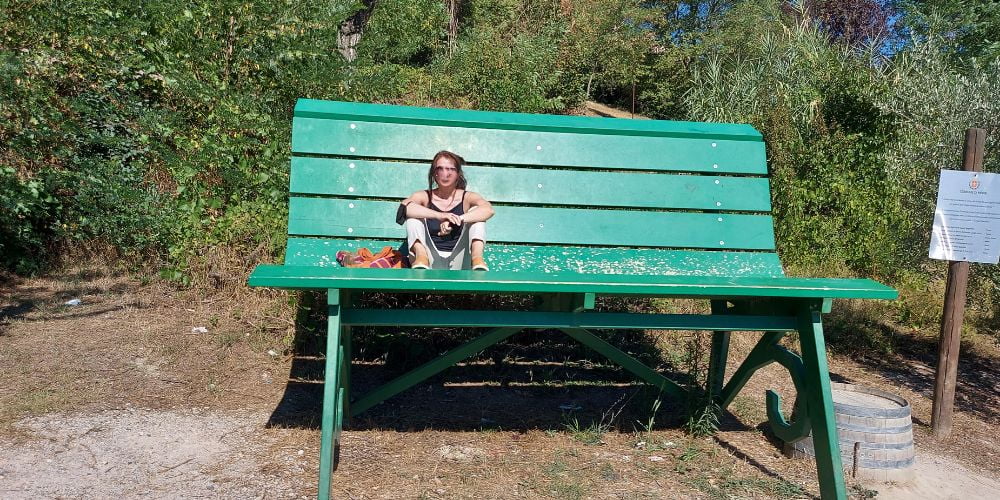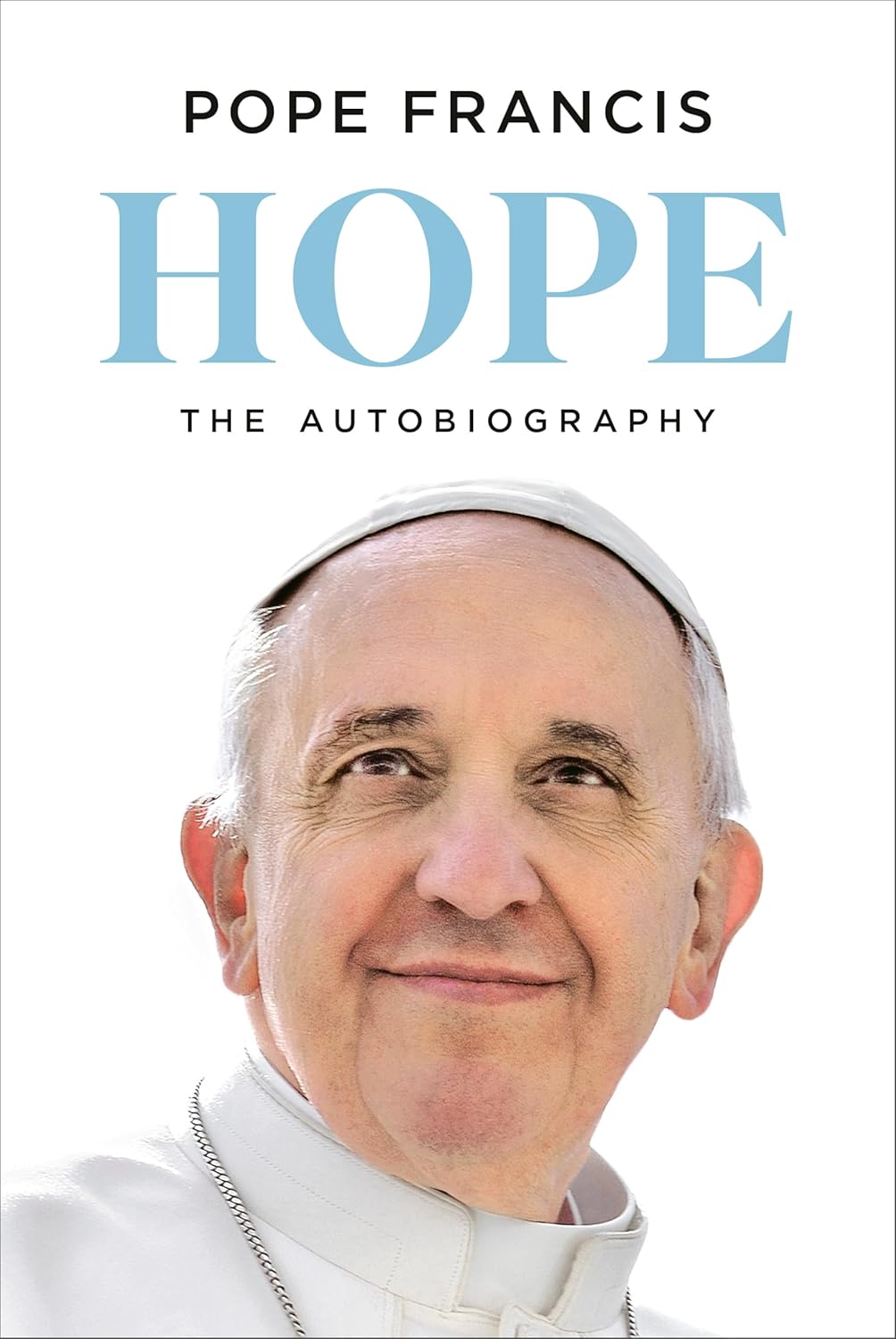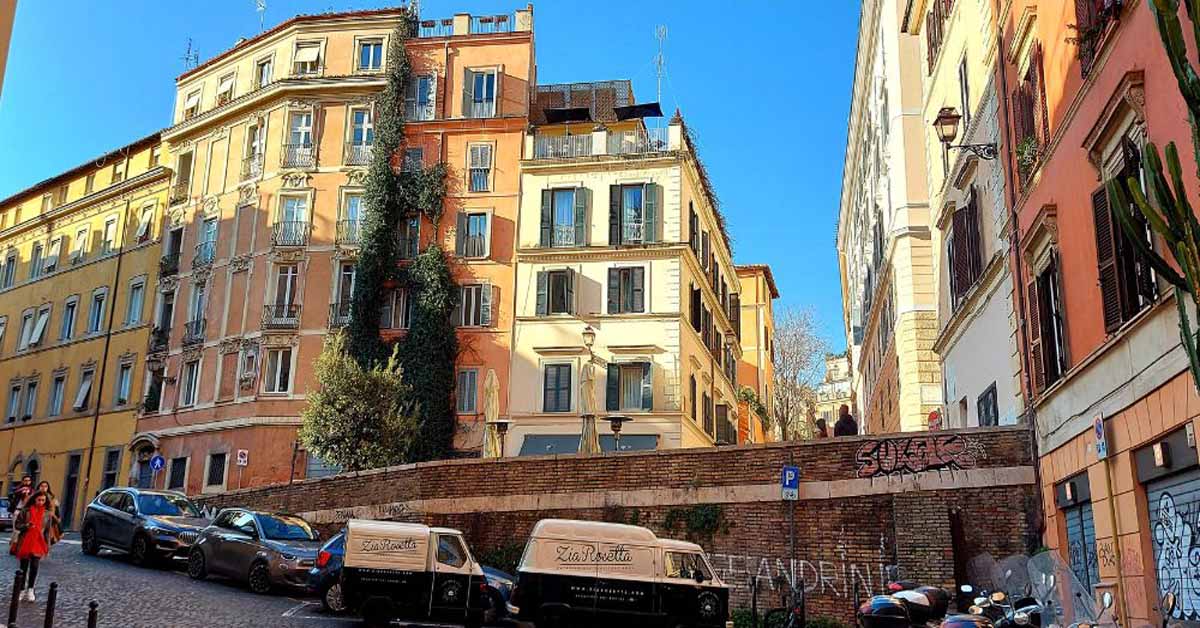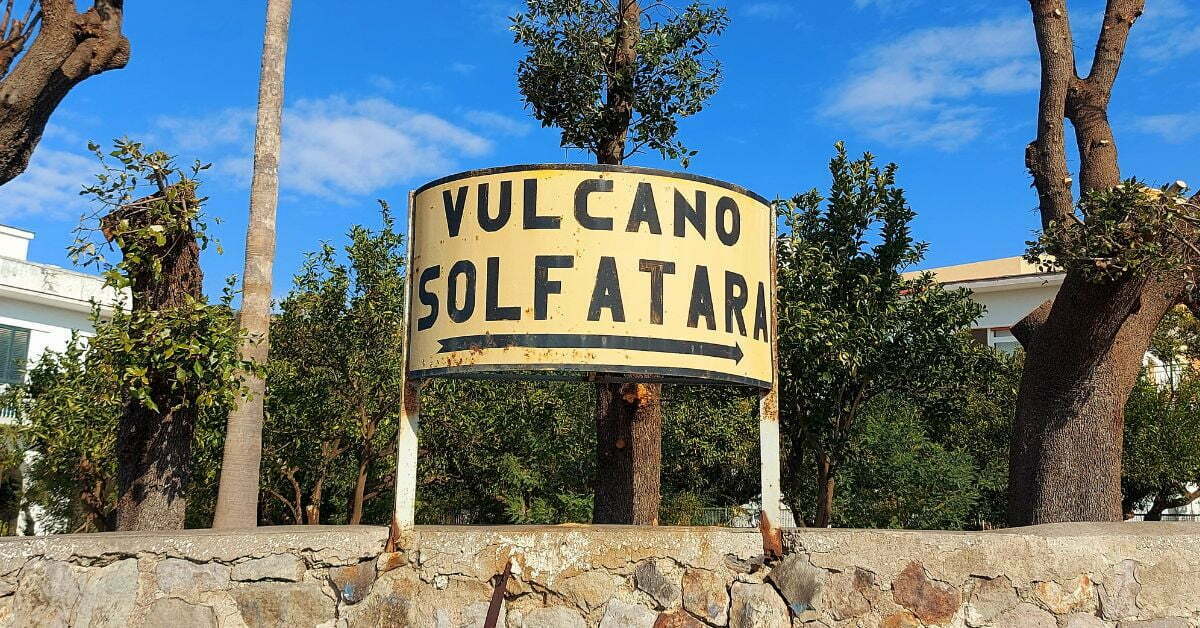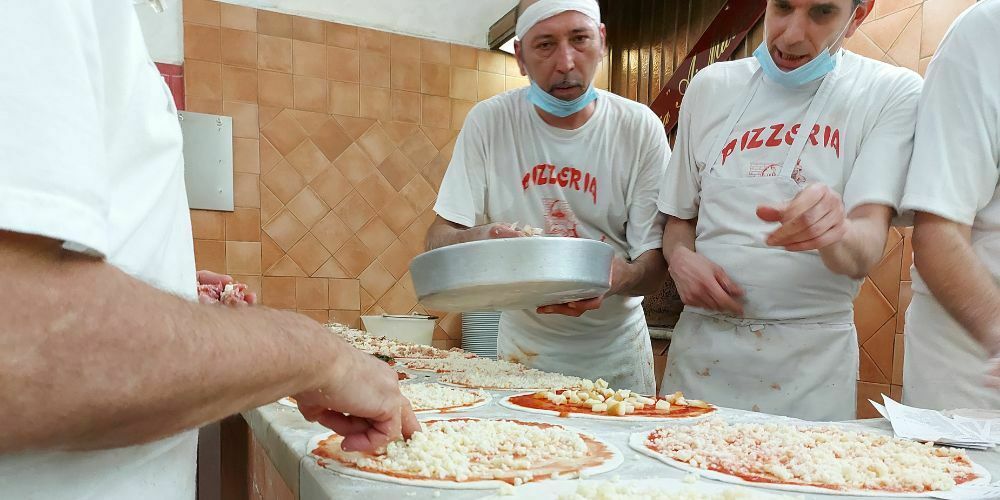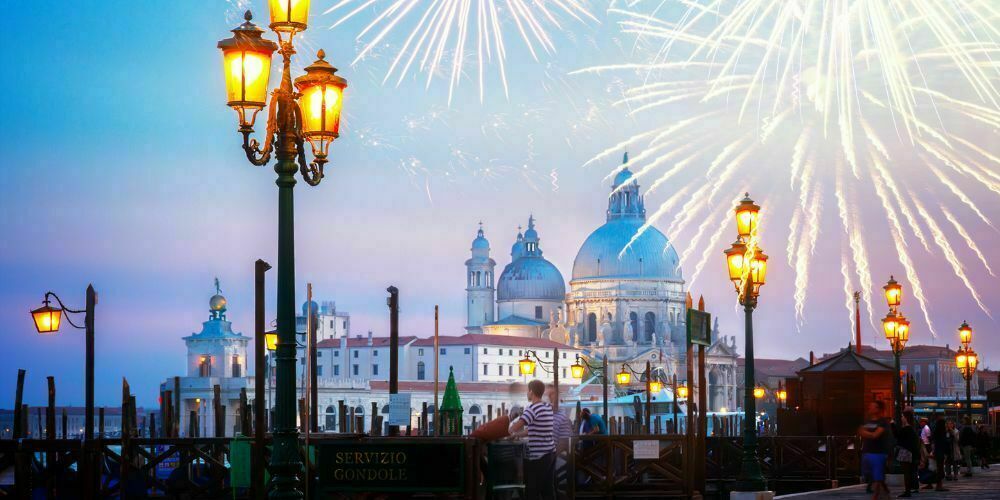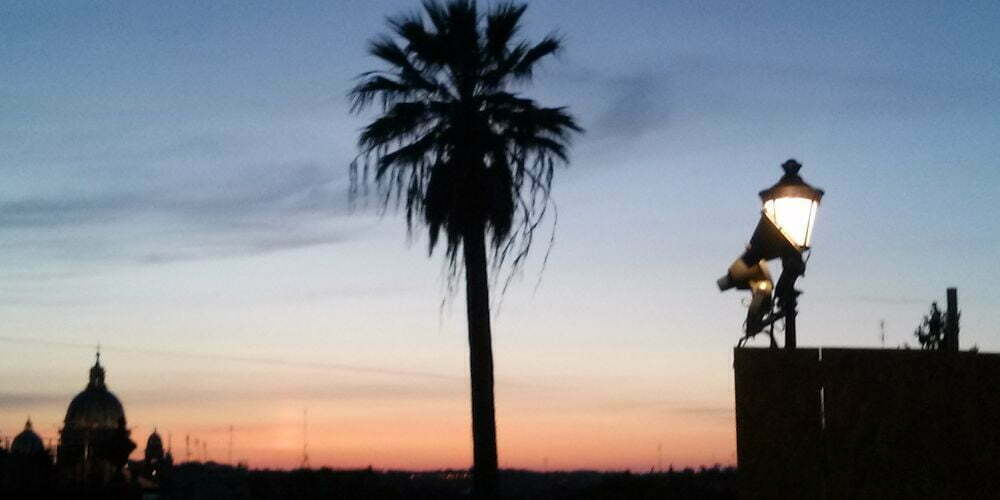The heart of Italian enogastronomy is the Langhe region. Here the country’s most famous red and white wines as well as champagne are made in a landscape so beautiful it is UNESCO protected.
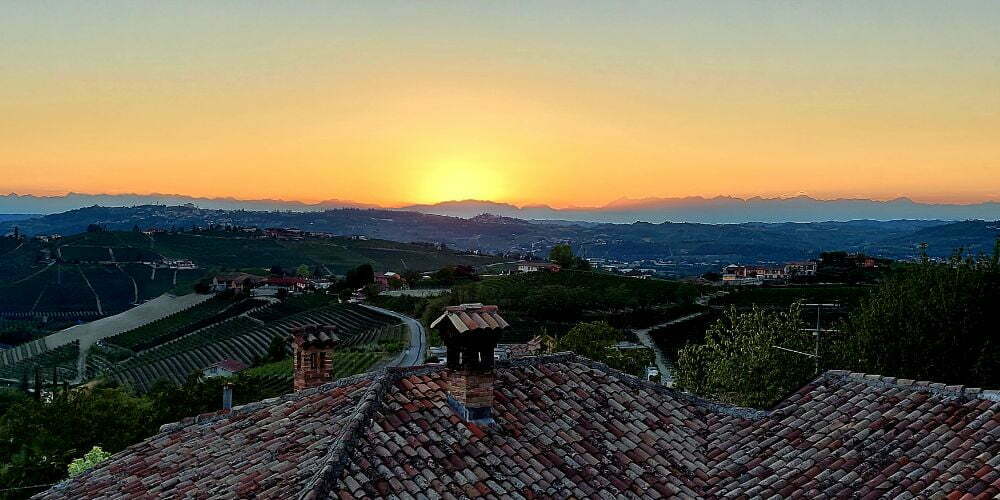
Langhe, Italy
Langhe is located in Piedmont (capital: Turin) and is world-famous for wines from Barolo and Barbaresco and the Asti sparkling wine among a lot of others.
Enogastronomically speaking (think also of the world’s most prized truffles coming from here) Langhe Italy is quite simply a corner of paradise.
Hope: The Autobiography
By Pope Francis
New York Times bestseller
First autobiography by a Pope
A vivid memory…
Get offer at Amazon.comWhere is the Langhe, Italy
The Langhe, which we also include the Roero and Monferrato wine regions, are located roughly between two towns, each with a four-letter name: Asti and Alba.
If we zoom out a bit, the closest major cities are Cuneo and Alessandria (40 km). A little further still, Turin (60 km) comes to mind, as does Genoa (100 km)

Alba is the centre of the Langhe region, while the larger wine region of Monferrato revolves around Asti. The smaller Roero (smallest circle on the map above) is more or less sandwiched between the Langhe and Monferrato regions
Langhe history of wine
Unesco wrote at the time when this area (in 2014) was included in the Unesco World Heritage List: “Vine pollen has been found in the area dating from the 5th century BC, when Piedmont was a place of contact and trade between the Etruscans and the Celts; Etruscan and Celtic words, particularly wine-related ones, are still found in the local dialect.
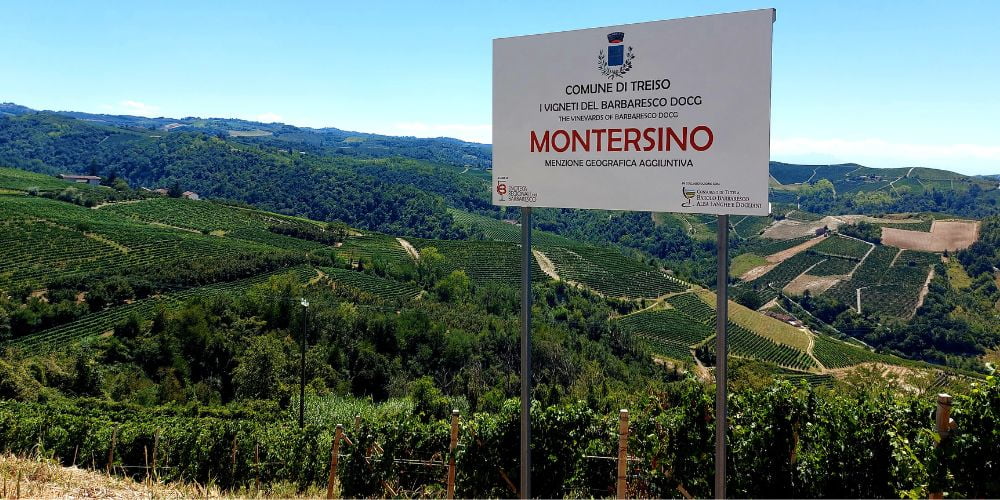
During the Roman Empire, Pliny the Elder mentions the Piedmont region as being one of the most favourable for growing vines in ancient Italy; Strabo mentions its barrels”.
Also read: Throughout the world, Prosecco is better known than the Asti sparkling wine. But what exactly is Prosecco and where does it come from?
The Langhe wine region
The Langhe is most famous for Barolo and Barbaresco. But first, let’s observe that there are basically three grape varieties that make Piedmont, of which Langhe is a part, such a famous wine region: Nebbiolo, Barbera and Dolcetto.
Nebbiolo
Nebbiolo grapes are the basis of Barolo wines. Barolo, which is a municipality, is located south of Alba. The only vineyards with (the highest) Barolo DOCG status are on the southern hills.
North of Alba is Barbaresco, which is only about 20 km from Barolo. Barbaresco also has very exclusive plantings of Nebbiolo – also only on the best south-facing slopes get de DOCG label. Yet the two wines differ considerably. The differences between Barbaresco and Barolo lie mainly in the difference terroir (soil type).
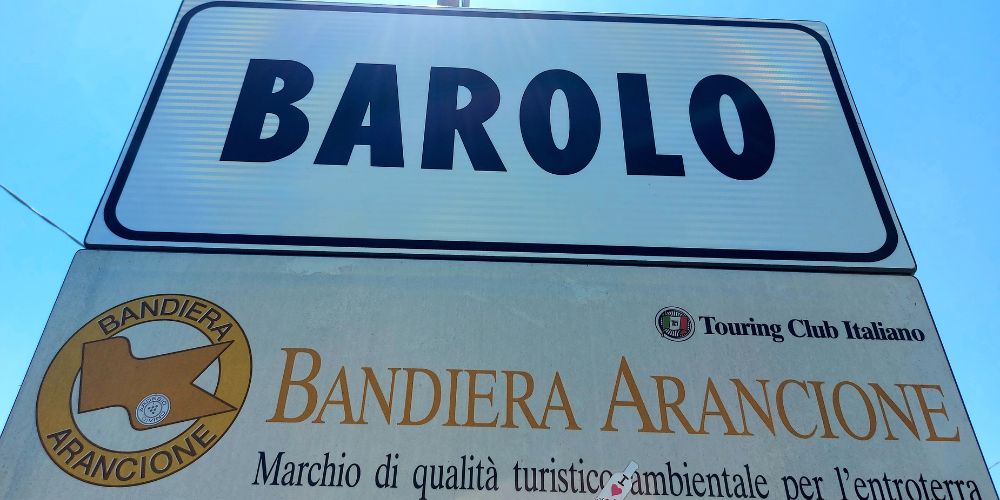
Difference between Barolo and Barbaresco
Barolo has a brick-red color and powerful flavor, tight tannins and a slightly higher alcohol content (at least 13%, rather 14%). The wines of Barolo mature for at least 1,5 years in barrel and are offered in bottle after more than 3 years.
In Barbaresco, lime predominates in the soil and features a climate that is subject to fewer temperature fluctuations during the day. This produces grapes that ripen earlier but have a thinner skin. This, in turn, means Barbaresco generally has less tannin, color and phenols (an aromatic alcohol).
So Barbaresco wines tend to taste lighter and have less tannin than Barolo
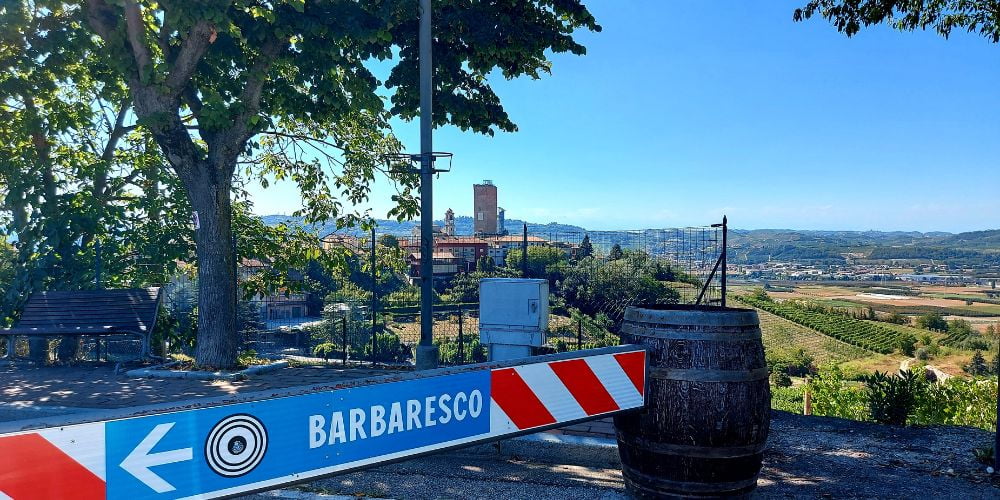
Barbera
Most wines have in their base the Barbera grape variety. The most famous, however, are the Barbera d’Asti, Barbera d’Alba DOC, Nizza DOCG and Barbera del Monferrato Superiore. The wine is known for its high acidity and has a medium to full body and a low amount of tannins.
Dolcetto
Dolcetto (literally translates as ‘little sweet’) is neither sweet nor little. The name presumably has to do with the high sweetness of the ripe grapes and the low acidity, so much that it is much softer on the palate. Possibly Dolcetto is also derived from the Piedmontese expression for hump (dosset).
The wines made from Dolcetto grapes are very dark in color with flavors of blackberry, licorice and tar. The wines are best not kept long in the bottle because they have little acidity.
A few facts
- The two main features that influence Piedmont’s weather and therefor wines: the icy Alps and the warm Mediterranean Sea.
- The Langhe produces mainly red wines. The rest (25%) is white and bubbly (Rosé is unimportant).
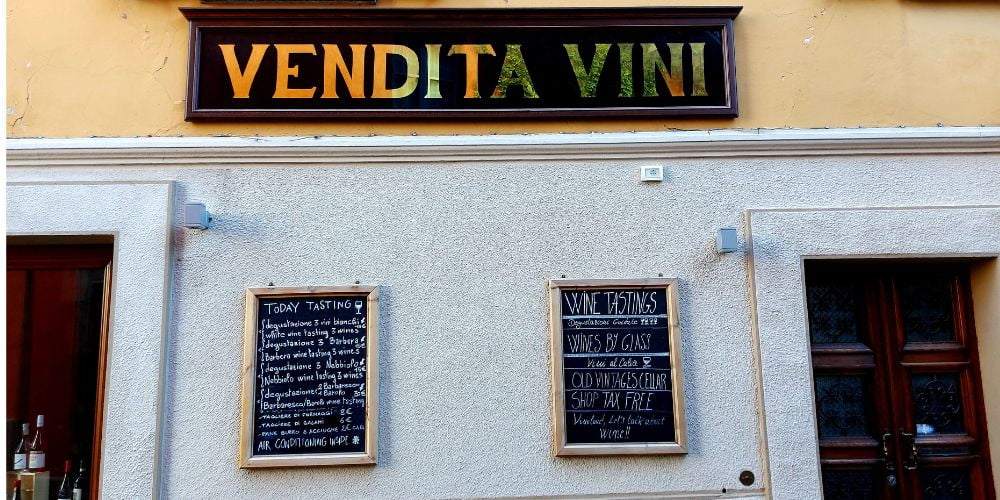
7 things to do in Langhe Italy
Lange is a treasure trove of cultural, gastronomic, and natural delights waiting to be explored. From indulging in delectable cuisines to soaking in the breathtaking landscapes, here are 7 must-do activities when visiting this charming region.
1. Wine tasting
That is, of course, a huge door to kick in. the Langhe wine region is there, above all, to taste the country’s best product. But it depends on which type of wine you prefer. The strong Barolo (red), the deliciously fresh yet ruby Roero Arneis (white) or the sparkling Asti to name just a few side streets. Quite a few producers have everything in bottle: wine from nebbiolo, barbera and dolcetta grapes. Here is a small selection:
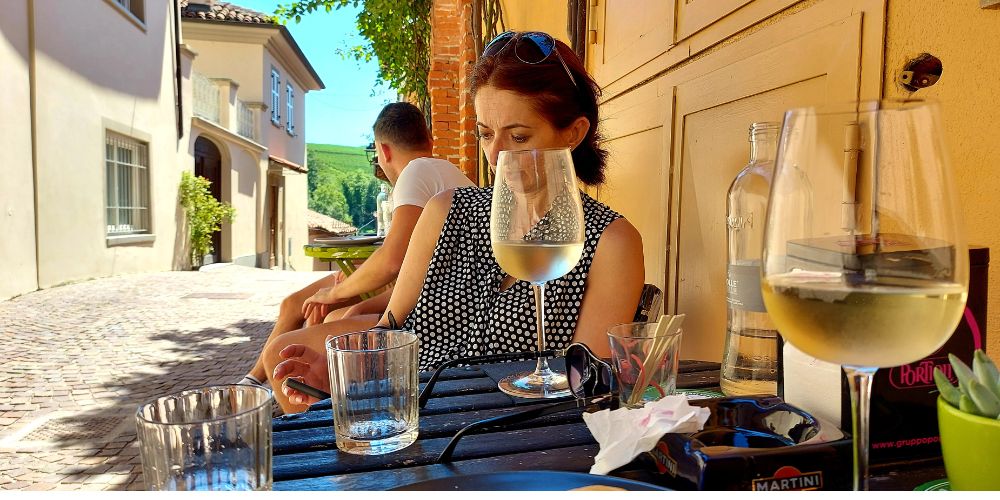
Barolo: Enoteca Regionale del Barolo is the marketing arm (at least that’s how I see it) of the association of Barolo winemakers. As such, they have a lot of Barolo (and not only) under the cork, which you can taste in a, however, not very cosy environment (Piazza Falletti in Barolo)
Roero: Banca del Vino. That sounds good: the wine bank. The bank holds the best of your own patrimony, doesn’t it? Visiting is easy and glasses are filled (a bit) via a technological driven wine dispenser. Piazza Vittorio Emanuele 13 in Pollenzo
Monferrato. Winemaker Michele Chiarlo created in 2003 a huge park with modern art installations (free entry) and possibility to visit his cantina and tasting his Barbera d’Asti and Nizza Docg plus a Barolo, Barbaresco and Gavi. Art Park: Via Cocito 30, Castelnuovo Calcea; wine tasting: Strada Nizza-Canelli 14042 Calamandrana
2. The Sol LeWitt Chapel and other colored chapels
The Chapel of SS. Madonna delle Grazie aka the Chapel of Barolo was built in 1914 as a shelter for those working in the surrounding vineyards in the event of storms or hailstorms. This roman catholic chapel was never consecrated and in 1970 bought by the Ceretto family together with 6 hectares of vineyard.
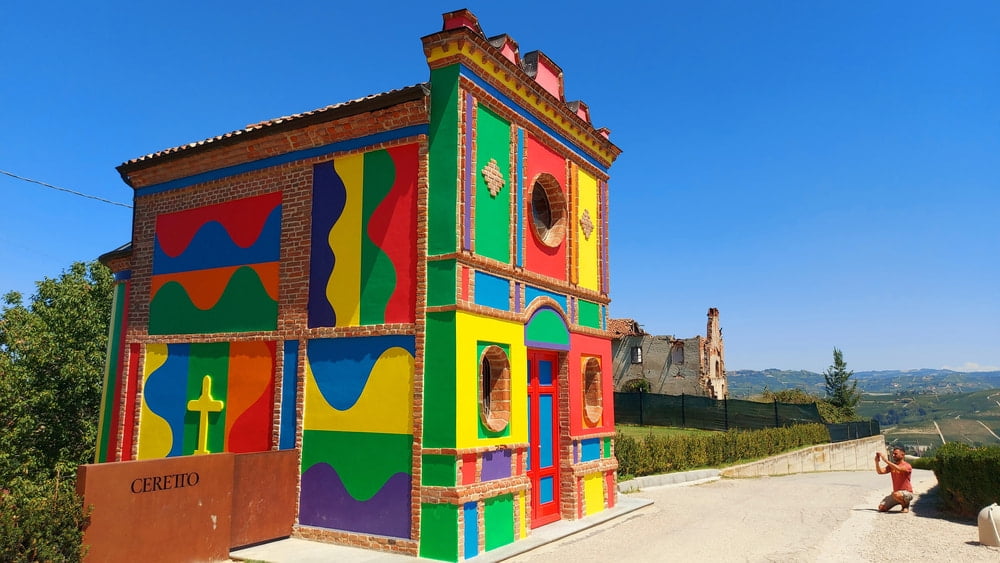
Reduced to ruins, after years of neglect, it became one of the most famous buildings in the area thanks to the reinterpretation that artists Sol LeWitt and David Tremlett gave it in 1999. Tremlett decorated the interior decorations as LeWitt took care of the external intervention. With their playful and colourful style, they gave new life to the little building.
The chapel is not far from Barolo, but cannot be visited inside. There is limited space to park your car near the building.
Tremlett has painted two other Langhe chapels in disuse in recent years: the Chapel of Beata Maria Vergine del Carmine in Coazzolo and the Chapel of Relais San Maurizio in Santo Stefano Belbo.
3. Champagne Cathedrals
Churches abound in Langhe Italy, and this wine region also boasts two cathedrals (Asti and Alba are capital of a diocese). Yet the underground cathedrals means something else, and is not dedicated to God but to Bachus.

There are four of these cathedrals, unearthly storehouses for wine, to visit, all of which have their home in Canali. We visited Contratto’s, and it was more than pleasant, also because there were only four of us. The guide talks about the wine process, and especially the Asti Spumante (sparkling wine), whose bottles are patiently kept and handled in rows for years.
4. Sleeping at a wine ranch
Admittedly, the idea (and the word alone) of a wine ranch is totally new to me, but after the experience at Locanda Cossetti, the concept stands like a house. A horse farm with lots of land and a top-notch restaurant in a pre-modern hall transformed with iron and glass. Plus: stay overnight on the ‘ranche’ in new rooms in old setting stone floors and original 19th century ceilings.
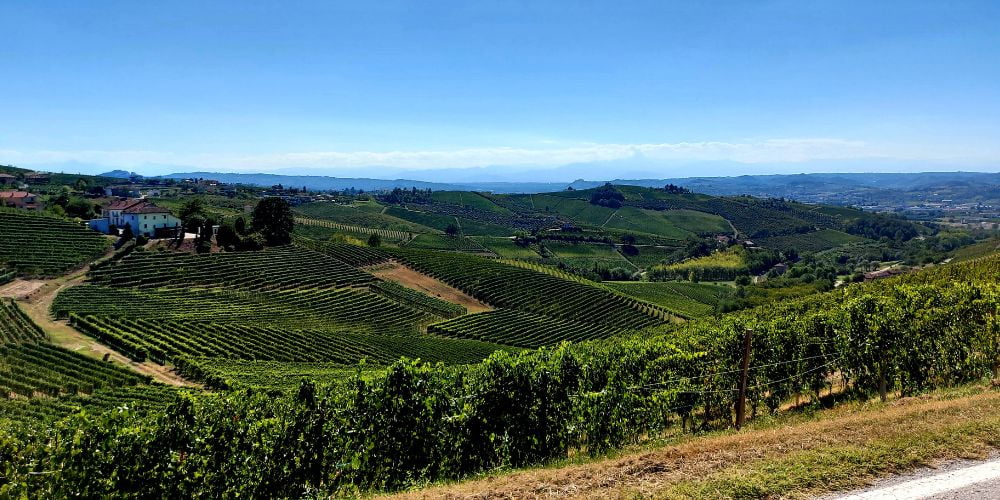
The concept is quite authentic, as the owners have been cultivating wine for over 130 years, mainly Barbera d’Asti (but also a Barolo, a white Roero etc).
Incidentally, my experience (2022) in this Locanda was booked (and paid for)* by myself without knowing beforehand what gem I would encounter.
* Any recommendation on this site are the product of experience and enthousiasm. There is certainly no sponsorship involved.
5. The world’s gastronomic capital: Alba
Alba is a small town (31.000 inh.) which you can easily visit in half a day, including lunch or dinner. If the wallet permits try a dish containing white truffle, which is one of the reasons why the city is world-famous.
The city is centered around Piazza Duomo (pictured) with the Cathedral (=Duomo) and city hall. This church in romanesque style is build in red brick (typical building material of this region). Inside the zebra motif pillars stand out. The same pattern can be seen in the San Domenico church (pictured).
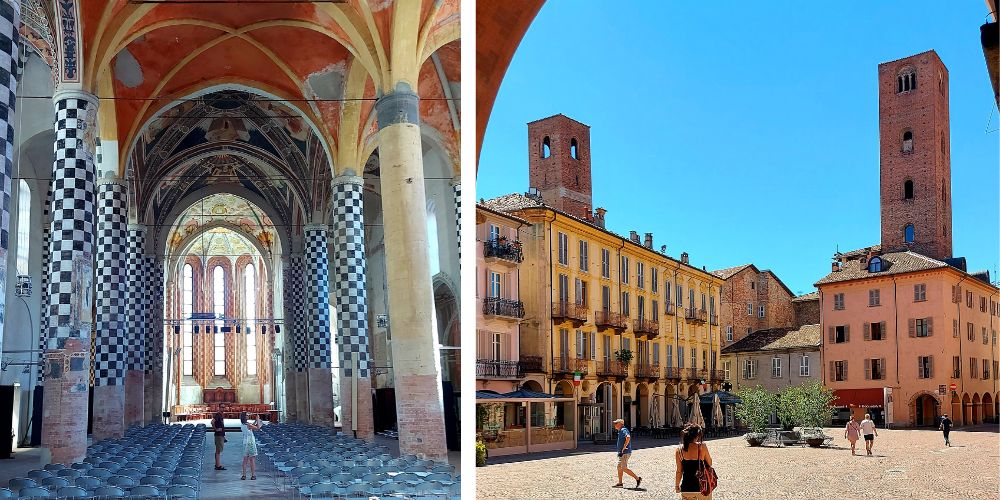
The shopping and eating is mainly centered on Via Cavour and Via Vittorio Emanuele, two streets at odds with each other, and surrounding area. Alba is also the city with many, medieval towers, including the Riva tower at Piazza Pertinace, named after the mayfly emperor of the Roman Empire (83 days in power- in the year 193 AD). At the square I noticed the nice bronze bust of Pertinax with a gentle expression, who was born in Alba.
Pertinax, by the way, reminds me of the winemaker of the same name (Pertinace in Italian = Pertinax), who organises some wine tastings for a decent price just outside Alba.
6. Castle of the country’s founder (and all about a strange ball game)
The name Cavour may sound rather unfamiliar to a foreigner’s ears, but anyone who mums around Italy stumbles across Via Cavours and Piazza Cavours everywhere (see, for example, in Alba, but I too live in a Via Cavour). There is a reason for this. Cavour was the political genius behind the creation of the modern, Italian state (in 1861), of which he was the first prime minister.
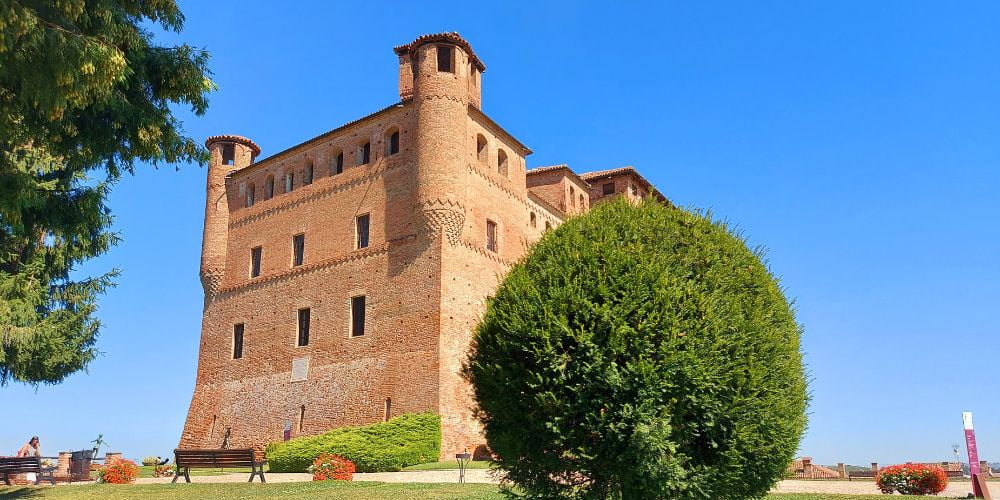
Cavour had not come tumbling up, but had come from the ruling class as a count with his own castle. That castle is now called the Castle of Grinzano Cavour. Visit it if you pass by, because of the perfect condition of such a typical castle building and also interesting exhibition on Cavour and winemaking, and the open air exhibition.
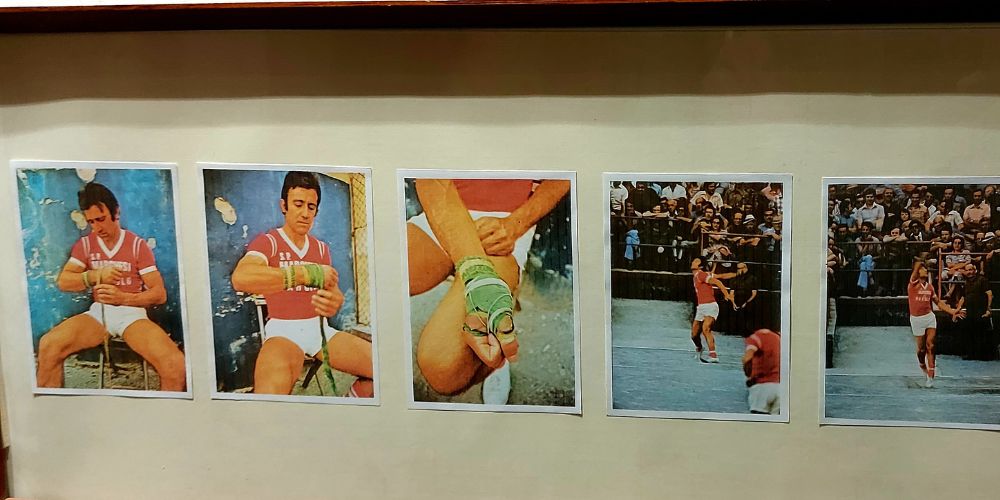
In the Castle, I came across pictures of a man getting ready for a game of balon also called pallapugno (fistbal). This is a sport that somewhere resembles volleyball and squash, but is not, and is much older than those two sports. It is played basically only in the Langhe region, and seems to be experiencing a revival. See how it is played here:
7. Watchtowers and benches for giants
Part of the Langhe is also characterised by watchtowers among the vineyards. All these towers made up the defence line of the Marquises of Carretto, who in medieval times controlled a large part of the Langhe and the Ligurian Apennines against Saracen invasions.
Today, the towers (most are free to climb) offer an excellent opportunity to see the Langhe from above and are a welcome interlude for those on a hike.
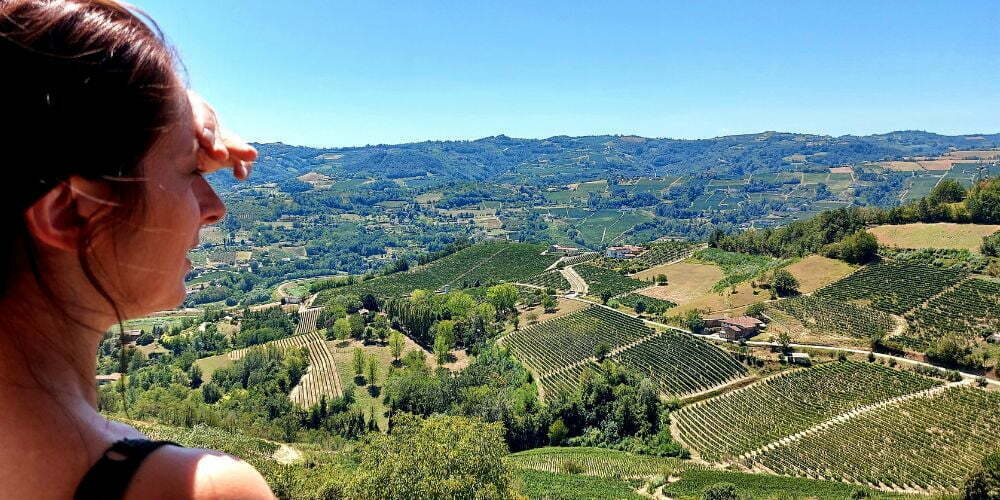
Another object to climb on are the huge benches in the open air that are meant for giants, but that ordinary people can also get on. It puts us humans (and our winemaking/ wine tasting) in a different light.
